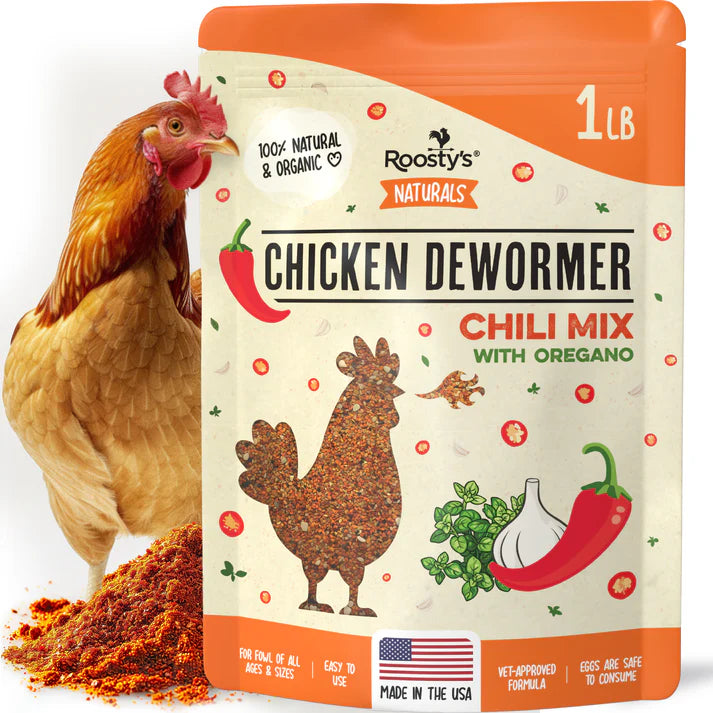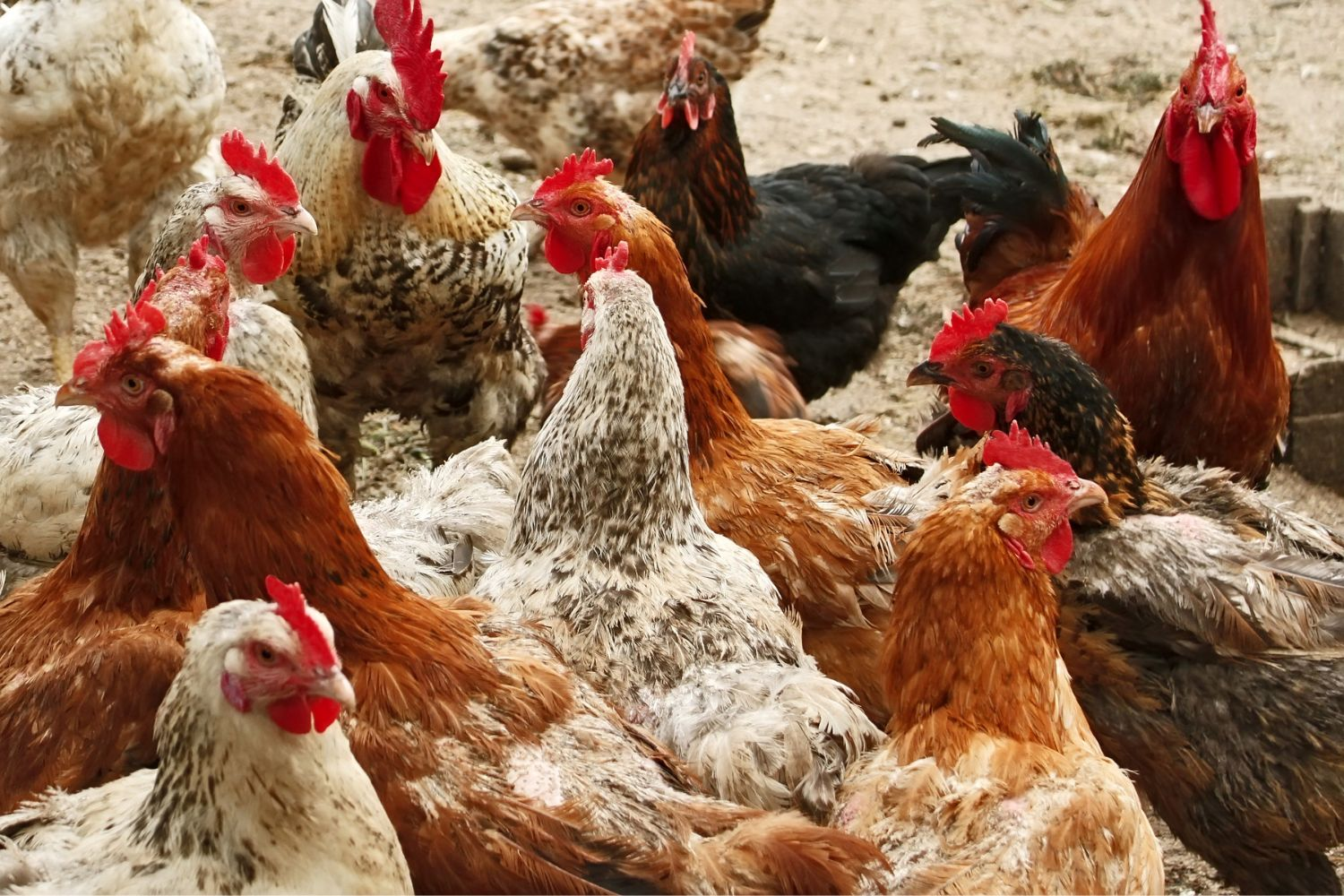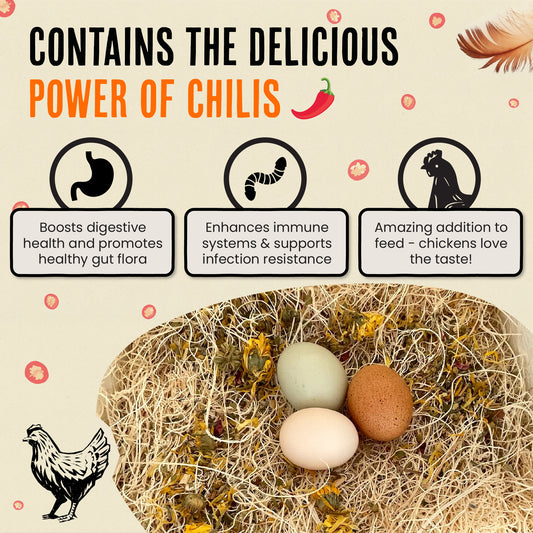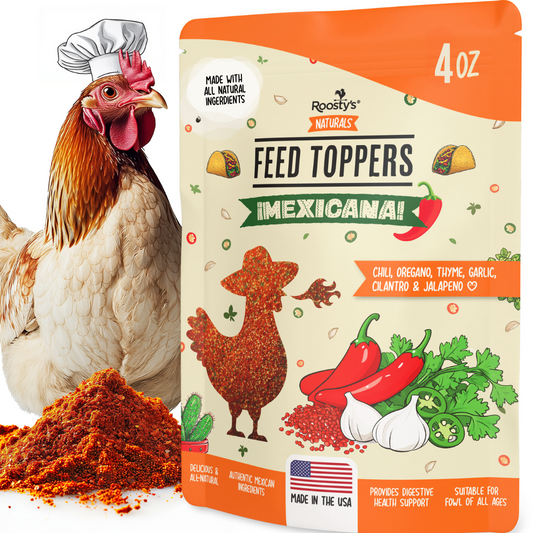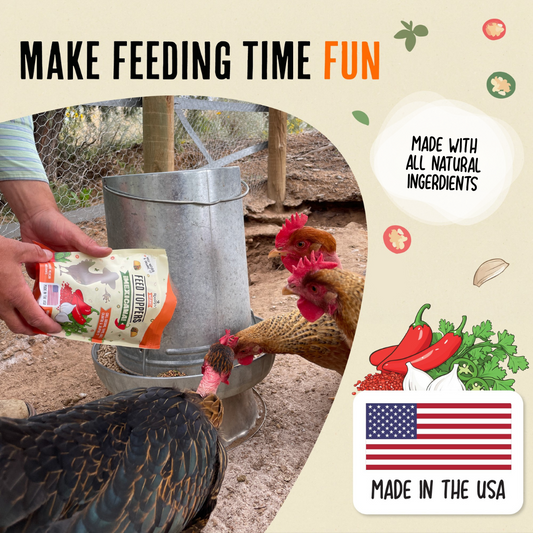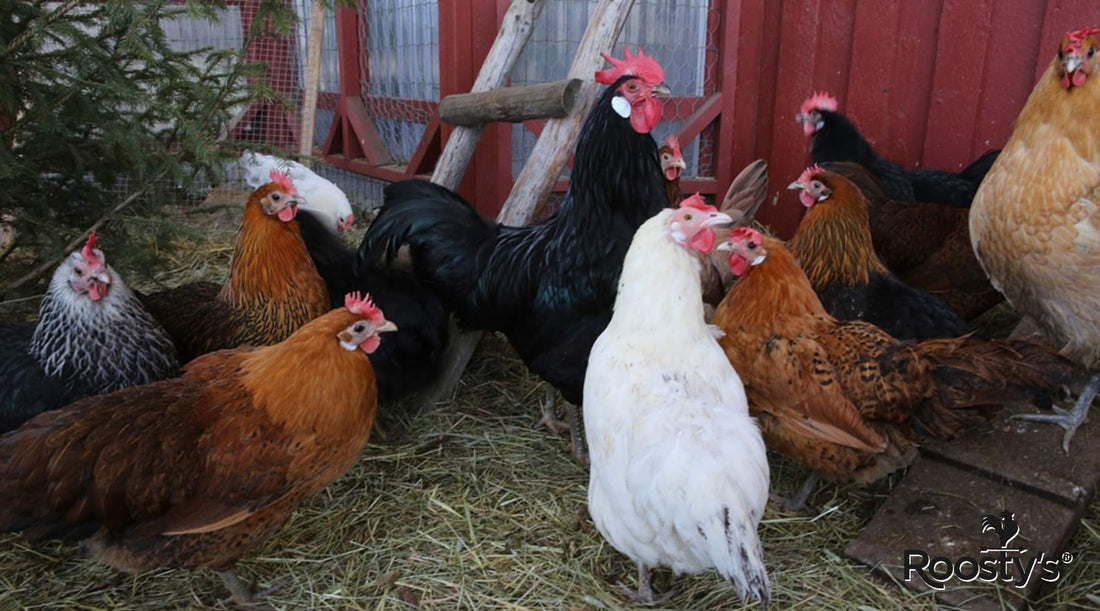
The Essential Guide to Flooring for Your Chicken Coop

Did you know that the global chicken population has more than doubled in size in the last 20 years to over 34 billion birds?
There has been a significant increase in the number of chicken keepers, with more and more people keen to embrace the good life and add feathered friends to their roosts.
There are multiple tasks to check off your to-do list when getting chickens for the first time, including ensuring that they have a safe, secure, comfortable space to call home.
Building or buying the right chicken coop is essential for optimum hen health.
When you’re thinking about creating a home environment for your chickens, it’s wise to consider the importance of flooring for your chicken coop. There are multiple options when it comes to choosing what to put on the floor of a chicken coop.
In this helpful guide, we’ll run through the options, highlighting pros and cons and offering top tips and tricks to ensure your hens are happy and healthy in their new home.
We’ll also discuss how to maintain your chicken coop floor and offer advice to help you find the right materials for your flock.
--------
Flooring options for chicken coops
Whether you’re a seasoned chicken keeper, or you’re new to the world of raising hens, it’s important to consider the best flooring for your chicken coop.
There are several different types of materials that can be used to create a chicken coop floor and some may be better suited to your flock and the type of chicken coop you have at home than others.
It’s understandable to wonder how to determine the best flooring for a chicken coop. The good news is that we’ve done the legwork for you.
To save you time and effort, we’ve put together the ultimate guide to flooring options to help you find the best floor for your chicken coop.
Here are some leading contenders to consider:
1. Concrete
Concrete flooring is one of the most popular options for chicken keepers, as it’s a bit of an all-rounder. It has plenty to offer in terms of functionality and it’s also relatively easy to maintain.
Laying a concrete floor might not be as easy and convenient as other flooring jobs, but in the long term, having a concrete floor could save you a lot of time and effort.
To help you decide if concrete is the best solution for you, let’s delve deeper into the pros and cons:
Pros:
- Safety: one of the most common reasons people choose concrete for a chicken coop floor is superior safety. Concrete is an excellent option for any chicken keepers who are concerned about predators. There’s no risk of an unwanted intruder burrowing beneath a concrete chicken coop floor and no chance of rodents penetrating the solid, sturdy base.
- Easy cleaning and maintenance: no matter how much you love your chickens, you probably don’t want to spend all of your free time cleaning up poop and desperately trying to scrub the floor clean. Concrete is easy to clean and maintain. You can blast the surface clean with a jet wash or a hose and add disinfectant to boost hygiene and keep your hens healthy.
- Durability: if there’s one trump card in concrete’s deck, it’s durability. While some flooring materials may only last weeks or even days, concrete is built to stand the test of time. It’s suitable for high-traffic coops, it’s resistant to adverse weather conditions and changes in temperature, and it doesn’t rot.
- Keeping cool: it’s important for hens to be comfortable in their home environment. If you live in an area that enjoys spells of hot, dry weather or intense summer sunshine, it’s worth considering concrete, as it stays cool, enabling your chickens to enjoy some respite from the heat.
Cons:
- Cost: the cost of a concrete chicken coop floor is likely to be much higher than some other materials, which might put some people off. It is worth noting that concrete is a really durable material though. This means that it offers great value for money if you’re looking to have a chicken coop in your yard or garden for several years.
- Lack of flexibility: some people prefer a fixed location for their chicken coop, but if you’re keen to enjoy the benefits of a more versatile hen house, such as a chicken coop with wheels, concrete flooring won’t work.
- Cold: concrete is ideal for hotter climes as it stays cool, but if you live in a cold country or the city or state in which you live experiences cold weather in the winter, it’s wise to avoid concrete unless you plan to add warmth by using hay, straw or other bedding materials.
- Risk of injury: rough concrete surfaces can increase the risk of foot injuries and scratches and scrapes. Make sure you have soft bedding materials on top of the concrete to reduce risks.
2. Wood (non-plywood)
If you’re thinking of using wood for your chicken coop floor, you can either use wooden boards or plywood.
We’ll evaluate both to make sure you’re aware of the advantages and disadvantages before you decide what to put on the floor in your chicken coop.
The pros and cons of wooden boards include:
Pros:
- Easily accessible: wooden boards are one of the most accessible and widely available materials you can use for a chicken coop floor. You won’t struggle to find boards for your hen house, even if you’re shopping at short notice.
- Simple construction: working with wooden boards is simple and convenient. It’s much easier and faster to lay a wooden floor than a concrete floor, for example.
- Cost: the abundance of wooden boards means that they are often a relatively inexpensive option.
Cons:
- Risk of rot: there is a risk of rot when you use wooden boards for your chicken coop floor. As a result, wood is not the most hard-wearing material. You’ll have to replace the flooring periodically, which will increase the cost.
- Difficult to keep clean: wood is difficult to keep clean when you’ve got a coop full of chickens depositing waste. Droppings can get stuck between the boards and you may find that it starts to collect underneath the wood, which can impact sanitation.
- Poor predator protection: protection against predators should be a key consideration when exploring the best chicken coop flooring options. Wood doesn’t perform well in this category compared to other materials, as the gaps between the boards can provide golden opportunities for uninvited guests to gain entry.
3. Plywood
Plywood offers an alternative to traditional wooden boards. This material is often considered one of the best options for a chicken coop floor because it solves most of the problems listed above while offering a range of additional advantages.
Here are the pros and cons of using plywood for your chicken coop:
Pros:
- Widely available: plywood is readily available, making it easy to source and relatively inexpensive.
- Easy to clean: unlike wooden boards, plywood is easy and quick to clean, provided that you add bedding materials. You can simply gather up the used bedding and dispose of it.
- Easy to build: one of the best things about using plywood is that it is easy to build. You don’t need heavy-duty tools or equipment, or a degree in carpentry to fit a sturdy, stable and even plywood floor.
- Protects against predators: plywood is an effective solution for keeping predators at bay and protecting your flock.
Cons:
- Difficult to keep clean without bedding: if you use plywood for your floor without extra bedding materials, you’ll find that the actual wooden surface is harder to clean than other options.
- Prone to rotting: plywood is prone to rot, which means that it’s not the most durable material.
4. Rubber mats
Rubber mats are often added to other materials to make the surface even, safe and easy to maintain.
If you have a wooden chicken coop floor, or you’re thinking about adding a concrete floor, for example, you might want to consider rubber mats.
Rubber protects the wood against excess moisture, which prolongs its lifespan, and it can enhance comfort.
The pros and cons include:
Pros:
- Quick and easy cleaning: the beauty of adding rubber mat flooring to your chicken coop is quick and easy cleaning. When you’re ready to spruce up your coop, simply take the mats out, shake them off, hose them down and let them dry.
- Comfort: the bouncy surface of the rubber provides additional comfort for hens while adding extra padding to prevent injuries.
- Slip-proof: rubber mats are slip-proof so you don’t have to worry about your chickens coming to any harm if they take a tumble or get barged around by their roommates.
- Insulation: when temperatures plunge, rubber mats provide additional insulation to keep your chickens toasty.
- Pest-proof: using rubber mats is an effective way to keep pests away from your chicken coop.
Cons:
- Cost: if you lay rubber mats on a wooden floor, you’ll increase the cost of the project significantly. This may be a disadvantage for some, but it will increase longevity, which means that it’s an attractive option for keepers looking for long-term solutions.
5. Linoleum
Linoleum is a lining material, which is used with other flooring materials, most commonly, plywood. Adding a linoleum lining can help to address some of the issues people experience with wooden boards and plywood.
If you have a wood or plywood floor, here are some benefits and drawbacks to consider before you decide whether or not to add linoleum:
Pros:
- Low maintenance: once it has been installed, linoleum requires very little in the way of maintenance, making it a simple and convenient option for busy chicken keepers.
- Easy to source and fit: linoleum is widely available online and from hardware and home stores and it’s also easy to fit.
- Quick, hassle-free cleaning: it’s quick and simple to clean linoleum flooring and easy to keep the surface clean and hygienic.
- Insulation: linoleum lining enhances insulation in the winter to keep chickens warm and cozy.
- Lowers the risk of pests: adding a lining lowers the risk of pest infestations.
Cons:
- Increased cost: if you choose to add linoleum to your plywood or wood floor, the cost will increase, as you’ll need to factor in the price of purchasing both materials.
- Less flexibility: adding a lining means that it’s not possible to move the coop, which reduces flexibility.
6. Wire
Wire (hardware mesh) may not spring to mind when considering the best material for a chicken coop floor.
This is because it offers fewer advantages than disadvantages for most chicken keepers.
Pros:
- Keeps predators out: the main reason people choose a wire chicken coop floor is to keep predators out. Wire floors are deterrents for intruders and they make it incredibly difficult for hunters to get to their intended prey.
- Flexibility: wire floors are more flexible than most other options, which makes them appealing to keepers who have a mobile chicken coop and those who move frequently.
Cons:
- Risk of injuries: the most significant disadvantage of using a wire floor in your chicken coop is the risk of injury to the birds. Wire can be coarse and rough, increasing the risk of cuts and grazes on the legs and feet.
- Not suitable for cooler climes and wet weather: wire floors can expose chickens to the elements, especially during the cooler, wetter months.
- Cost: hardware mesh is relatively expensive.
--------
Choosing the best chicken coop floor

We’ve established that there are lots of options for chicken coop flooring, so how do you decide which is the best material for a chicken coop floor?
Every keeper is different and some options may be better suited to you than others.
To help you decide, here are some tips for choosing the best chicken coop floor:
- Consider your location: your location is important because some materials are better suited to certain climates and weather conditions than others. Concrete, for example, is ideal for keeping hens cool in the summer, but it can be cold in the winter. Rubber mats and linoleum add insulation, creating warm and cozy environments in the cold months.
- Set a budget: the cost of installing a chicken coop floor can vary hugely depending on the materials you use. Concrete is more expensive than plywood, for example.
- Consider the timeframe: when weighing up your options, it’s beneficial to think about the timeframe and how long you need your floor to last. Are you planning to change or upgrade your chicken coop in a few months, or are you hoping to keep chickens in the same house for years to come? Look for durable, hard-wearing solutions for long-term use.
- Assess the risk of predators and pests: some areas are much more susceptible to visits from unwanted intruders, including predators and pests, than others.
- Think about installation and maintenance: if you’re looking for an easy life, or you have a hectic schedule, it’s important to think about installation, cleaning and maintenance. Ideally, you want to opt for materials that are easy to work with and facilitate simple, fuss-free cleaning and maintenance.
- Weigh up the advantages and disadvantages: there are pros and cons to every material. It’s always beneficial to weigh up the advantages and disadvantages and consider your requirements and preferences before you decide what to buy.
- Seek advice: if you’re unsure which flooring type is best for your birds, don’t hesitate to seek advice. Talk to your veterinarian, contact a local poultry organization or speak to experienced chicken keepers.
Benefits of using rubber mats in your chicken coop
Using rubber mats in your chicken coop can help to solve some of the problems you may encounter if you choose a wood or plywood floor. The benefits of rubber mats for a chicken coop include:
- Easy, stress-free maintenance
- Simple to clean
- Easy to source
- Extra insulation for the cold winter months
- Added comfort for your chickens
- Reduces the risk of pests
- Increases the longevity of the wood beneath
- Makes life more difficult for predators
Disadvantages of using rubber mats for chicken coop flooring include:
- Cost: if you add rubber mats to your floor, you’ll spend more as you’ll need to cover the cost of the plywood or wooden boards and the rubber mats.
- Risk of water damage: rubber mats are not fully waterproof unless you can source a sheet that is large enough to cover the entire area.
How to create a removable floor for your chicken coop
If you’re thinking about setting up a versatile, flexible chicken coop in your garden or yard, you may be wondering how to put a removable floor in your chicken coop.
Some materials are permanent, which means that you can’t move around, but there are a few options that are suitable for portable or mobile chicken coops.
These include:
1. Dirt
A dirt floor is a viable option for a movable chicken coop. Dirt floors are an easy, cheap option because they don’t require any maintenance and there’s no installation process. For a portable chicken coop, keepers simply clean up the mess once they’ve relocated the coop to a different location.
2. Wire
Wire floors are not generally recommended for chicken coops because they carry a risk of injuries and they don’t provide comfort, but some keepers consider them an effective flexible option for mobile chicken coops.
3. Plywood
If your chicken coop has an elevated plywood floor, it may work if you’re thinking about building a chicken tractor or adding wheels to create a mobile chicken coop.
Tips for protecting and finishing your chicken coop floor
Once you’ve installed your chicken coop floor, it’s a good idea to try to protect it as best you can to enhance durability and prolong its lifespan.
You can search online to find out how to protective finish the floor of chicken coops or seek advice from experienced owners.
Typically, the best ways to protect and finish your floor are to keep up with maintenance and use bedding or lining to shield the material. Here are some top tips:
- Add bedding materials: adding bedding materials offers a range of benefits for you and your chickens. Your chickens will be more comfortable and they’ll also enjoy scratching and burrowing in the bedding and the flooring will last longer. If you have a plywood floor, for example, adding wood shavings, hay or straw will help to protect against excess moisture and absorb odors. It’s also much easier to keep your chicken coop floor clean when you add bedding, as you can simply remove the soiled bedding rather than having to clean stained, dirty wood panels.
- Clean your floor regularly: keeping on top of cleaning is beneficial for the health and well-being of your hens, but it can also help to preserve the condition of the floor. You’ll also find it much quicker and easier to clean the coop if you do it frequently rather than letting waste accumulate.
- Limit exposure to water: water can pose problems for flooring materials, particularly wood and plywood. Try to limit exposure to water by adding insulation, closing gaps and cracks and using chicken coop bedding. You can also seal and protect your floor by applying a layer of rubberized roof coat material.
The ideal materials for a chicken coop base
Many chicken keepers find that the best way to make a floor for a chicken coop is to utilize a combination of materials to form layers. Starting with the base, it’s important to consider these factors:
- Durability: it’s beneficial to think about how long the material will last and how long you plan to keep chickens or use the same chicken coop. If durability is a priority, concrete is usually the best option as it lasts for several years.
- Cost: cost is a factor for most people. Look for solutions that fit within your budget. If you’re looking for an all-rounder, which is cheaper than concrete, plywood is generally considered a great option.
- Versatility: some people would like to be able to move their chicken coop around. If you’re keen to create a portable chicken coop, you’ll need to factor this in when exploring flooring materials. You won’t be able to move a chicken coop with a concrete floor, for example.
- Comfort and well-being: if raising happy, healthy hens is your ultimate goal, it’s beneficial to focus on comfort and well-being. Avoid materials like wire and opt for floors that have added insulation or an extra layer of bedding.
- Weather conditions: think about the weather conditions where you are. If you live in an area that is usually warm and dry, you won’t have to worry too much about excess moisture or keeping your hens warm in the winter. If it’s cold and wet in the winter, add insulation and bedding to make your hens more comfortable and choose materials that are resistant to rot, such as metal and concrete.
Creating a comfortable environment: What to put on the floor of your chicken coop

For many of us, our pets are like members of the family. If you’re very fond of your chickens, it’s natural to want to ensure they feel comfortable, relaxed and cozy in their home environment.
Choosing the right flooring materials is one job to check off your list to create the perfect haven for your hens. To enhance comfort, we recommend using bedding on top of the floor base.
If you have a concrete, wood or plywood floor, for example, you can lay bedding on top. There are multiple bedding materials to choose from, including:
- Wood shavings
- Sand
- Straw
- Hay
- Bark or wood chips
These materials not only provide a softer, more comfortable surface for chickens to rest and walk around inside the coop, but they also make cleaning much quicker and simpler.
Instead of trying to keep the floor clean, all you have to do is remove the dirty bedding and put new bedding down.
The top flooring choices for a chicken coop
There’s a huge range of materials that can be used to make a chicken coop floor and create a comfortable, safe environment for hens, but two options stick out to us. We recommend using concrete or plywood for your chicken coop floor.
Concrete
Concrete is strong, durable and hard-wearing, it offers excellent value for money for long-term projects and it’s more resistant to adverse weather than other materials.
Concrete floors are easy to maintain and keep clean and they’re brilliant at protecting chickens from predators. You can add bedding to enhance comfort and make cleaning even simpler.
Plywood
Plywood is easy to work with and install, it is readily available and easy to source and it’s a cost-effective option for those looking for a budget-friendly solution that doesn’t need to last for years. Plywood floors can be cleaned with minimal effort, provided that there is extra bedding.
Summary
It’s exciting to think about the design and aesthetics of a new chicken coop if you’re preparing to welcome some feathered companions to the fold, but it’s important to consider the practicalities of keeping chickens.
You may want your coop to look fabulous, but it also has to be safe, secure, comfortable and hygienic.
Choosing the right flooring is an essential part of creating the perfect home for your hens. When considering flooring materials, think about your budget, how long the materials will last, where you live and how you can enhance comfort.
Every option has pros and cons, but there are good reasons why concrete and plywood are popular choices.
These materials cater to the requirements of most chicken keepers.
Key takeaways:
- There are multiple chicken coop flooring options available
- Some materials are only suited to fixed chicken coops while others are removable
- Concrete and plywood are the best options for most chicken coops
- You can add bedding to your base to provide additional comfort and warmth and reduce the risk of injuries
- It’s important to look for flooring that protects against the elements and predators
- Chicken keepers should always weigh up the pros and cons and think about their requirements and objectives before choosing flooring for a chicken coop
--------
